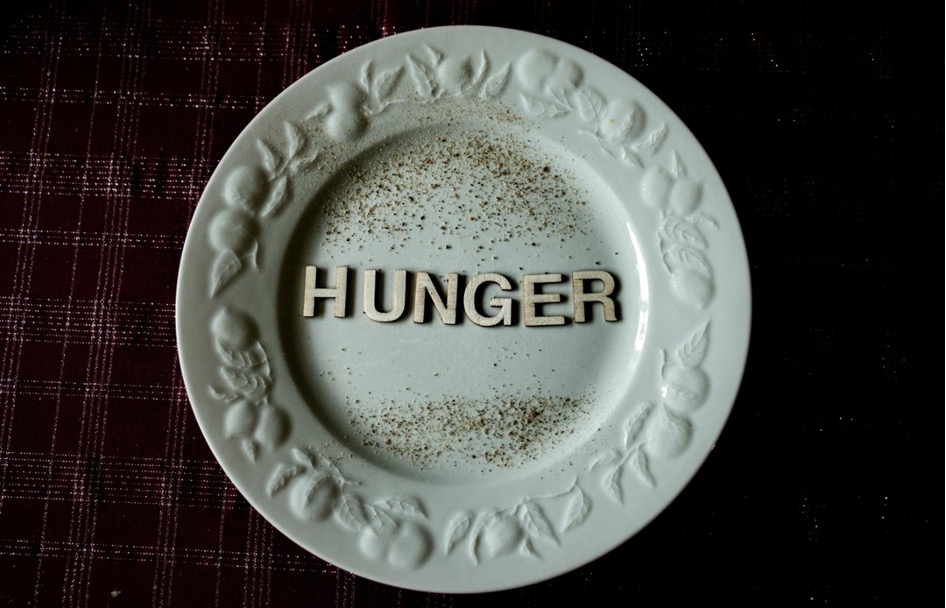This publication is in proud partnership with Project UNITY’s Catalyst Academy 2023 Summer Program.

Source: Siggfried Poepperl
Abstract
Background: Since the 1900s, food insecurity (FI) has been a significant public health concern in Illinois, especially Chicago. There is an urgent need for community-focused intervention within Chicagoland and adjacent underserved communities. Objectives: The objective of this literature review is to investigate FI at a national and local level to design community-focused interventions that help underserved neighborhoods generate equitable resources. Methods: This literature review was conducted by synthesizing 116 scholarly sources that involved FI. Results: Black and Hispanic families are at the highest risk for FI. 24.9% of black and 19.3% of Hispanic families respectively nationwide, due to aspects of systemic racism, like redlining, and a lack of available resources. Several interventions have been undertaken to address FI within these communities, but food insecurity is still a persistent issue. Conclusion: Moving forward, more community-focused interventions should be emphasized in Black & Hispanic communities such as curriculum-based workshops, food drives, gardens, nutrition newsletters, and nutrition clubs. The interventions will improve food security and related disparities in Chicago, especially in the Black and Hispanic communities, by educating the youth and establishing hands-on initiatives providing more education, resources, and coalitions with local organizations.
Keywords: Food insecurity (FI), Chicago, Nutrition, Black and Hispanic Communities
Introduction
Food insecurity (FI) has been a prevalent issue in American households for centuries. Every day, one in eight families in America is forced to decide whether to keep the lights on or feed their family due to FI. On a smaller scale, 1 in 11 individuals in Illinois face hunger, 1 in 9 of which are children. FI, defined as “…the limited or uncertain availability of nutritionally adequate and safe foods”. Thus, the term not only refers to the scarcity of food, but also its poor quality, and the related health consequences for families and society at large1. In this literature review, we aim to outline the epidemiology of FI, the factors that contribute to FI, existing public health efforts, and possible future solutions to address this global issue.
The H.U.N.G.E.R initiative investigated 116 scholarly articles, through national literature review and evidence-based research within Chicago while also conducting two interviews with Chicago-based stakeholders: the principal of a local elementary school and the leader of an equity-promotion organization.
The National Literature Review gave us a clearer perspective and understanding of how FI affects communities across the country. We found that Hispanic and Black communities were the most at risk for FI. The significant social determinants of health for FI we found were: low-income or unemployment status, poor refrigeration conditions for food, and vast distance from food. FI has been found to severely impact the cardiometabolic system through complications such as obesity, hypertension, diabetes, kidney disease, and congestive pulmonary disease2. Additionally, FI can place adults in disadvantaged areas at higher risks for breast and colorectal cancer.
FI in the United States is measured in many ways. One common approach is the Food and Agriculture Organization (FAO) technique for determining calories “per capita” at the national level. The FAO interviews respondents in their homes to acquire high-quality dietary information about food-insecure groups. However, it may inaccurately track FI trends as it counts the amount of food that is available, not the amount of food that is eaten during the measurement period3. Additionally, the nutritional intake of a person is measured using a variety of techniques, including meal frequency questionnaires, 24-hour recall, and food diaries4. These approaches depend on recall or observation. One can estimate portion proportions by weighing or using assisted memory. These estimates, which rely on precise food composition databases, assist in determining food group counts and nutritional intakes. Cutoff points are needed to determine the likelihood of nutrient deficits when interpreting nutrient intake. This may be beneficial as it addresses both macro and micronutrients as well as calorie intakes at an individual level. However, this method may lead to high measurement errors and biases, as it relies heavily on the participant’s memory. They would not only have to remember what they ate, but also, how much they ate.
There are a variety of government and community-driven efforts aimed at mitigating the effects of food insecurity, but they have significant shortcomings. SNAP is a government aid program that provides food benefits to low-income families, boosting their grocery budget so that they can buy healthy and nutritious food5. However, SNAP may provide insufficient funds for families’ food expenses, especially for larger families. Many food pantries and soup kitchens limit individuals by only serving them one meal a day. Future research and interventions need to address FI as a public health crisis, not only by increasing anti-hunger programs but also by targeting the specific social determinants that impact each community’s FI. As a nation that is currently facing crises of starvation and obesity, we must support our communities through research, intervention, and equitable access to healthy foods.
Evidence-Based Research Findings
Through our Evidence-Based Research (EBR), we found that Black and Hispanic families are at the highest risk for FI within Chicago. Chicago has a long history of redlining, blockbusting, and gentrification which also contribute to higher FI rates for minorities. Redlining can be defined as “a discriminatory practice that consists of the systematic denial of services such as mortgages, insurance loans, and other financial services to residents of certain areas, based on their race or ethnicity”6. Blockbusting is the practice of introducing African-American homeowners into all-white neighborhoods to drive away White families and reduce housing prices7. Gentrification occurs when there is a rapid influx of middle-class or wealthy homeowners that move into poorer neighborhoods, rapidly increasing housing prices and displacing the low-income families that are living there8. Consequently, individuals in these places face numerous health implications such as obesity, diabetes, and hypertension9.
FI impacts high-risk families on many levels – a reality that is captured by the socioecological model. On an individual level, education and disability contribute to FI. On an interpersonal level, marital status, parental education level, and parental employment all contribute to FI10. At the community level, access to fresh foods (or lack thereof, in food deserts) and community-based interventions can impact the severity of FI as more than 20% of Chicago residents (3.3 million) live in a food desert11. A food desert is an urban community where it is difficult to find or buy healthy produce12. On an organizational level, several food assistance programs, such as SNAP and The Greater Chicago Food Depository, provide aid to food-insecure families and individuals in Chicago. However, SNAPS’s benefits were cut short after COVID-19, decreasing by over $255.13 At the policy level, legislation has been implemented to reduce food insecurity. In Springfield, lawmakers are considering the creation of a grant program under the direction of “Senate Bill 850”. Proposed by Governor J.B. Pritzker, the program aims to alleviate the roots of violence and crime in Illinois by providing aid to independently owned stores14. Additionally, in early 2023, Governor Pritzker signed a bill creating the Health Foods Access Program, which aims to provide equitable access to healthy foods all across the state by providing economic assistance to grocery stores, and plans on expanding to rural and underserved communities15.
Although there are several existing programs and a few recent initiatives, many food banks, pantries, and hunger organizations such as the Greater Chicago Food Depository and Feeding America are dissatisfied with the amount of legislative action taken. Larger advocacy efforts and support of local food banks is needed to increase access to healthy food.
Stakeholder Perspectives
Through interviews with various stakeholders, including Ms. Ann Hofmeier, the principal of Laura B. Sprague Elementary School, and Mrs. Nicole Laport, the Director of Communications at EAT Chicago, our team gained valuable social perspectives on FI in the Chicagoland area.
Ms. Hofmeier emphasized the need for a diverse curriculum-based nutrition program and transparent communication with parents. They explained how children also lack self-regulation skills that help them avoid unhealthy choices16. While positive options exist, the absence of a formal nutrition program is emphasized in the Evidence-Based Literature Review. Hence, comprehensive nutrition education in schools is crucial in addressing FI as it can empower students and parents, promote healthier food choices, and improve food security outcomes. Lack of education and knowledge about the consequences of limited access to proper nutrition contribute to many parents’ disengagement with their child’s nutrition. This lack of knowledge perpetuates the cycle of FI, as parents may not fully grasp the impact that inadequate nutrition can have on their children’s health and well-being.
Mrs. Laport expressed the stark reality of FI stemming from systemic racism, gaps in the system, and inequality of access to food. There were many commonalities between our research and our conversations – for example, that food deserts and access to affordable, nutritious food are large issues that need to be addressed.
Plan of Action

After combining the perspectives from our evidence-based literature reviews and stakeholder interviews, we have designed a focused three-part intervention.
This action plan, which is divided into discrete phases, presents a strategic approach that will be implemented over one year’s time to further our commitment to nutrition education and community well-being. The approach moves toward complete efforts for sustainability, starting with an emphasis on evaluating changes in nutrition education, reviewing participation impact, and putting on interesting workshops. These include creating a thorough sustainability plan, ongoing monitoring and evaluation, and actively advocating for our solutions to increase public awareness.
The timeframe of the strategy is divided into three main sections: August through November, December through February, and March through August. In the first phase, interactive seminars with local nutrition experts and community leaders are highlighted. In the months to come, we’ll be focusing on expanding our audience by sending out a nutrition education letter on multiple platforms. Targeting high-risk populations, the approach culminates in a vibrant Community Resource Fair that includes essential elements including SNAP benefits information, food assistance programs, food drives, and mobile food pantries.
Strengths and Limitations
The curriculum-based workshops are available to not only children, but also adults on zoom to improve accessibility. To address the challenges associated with recruiting adults, who have less time to attend the workshop meetings, we will send out surveys to find a time that the majority of interested participants can attend.
Our nutrition newsletter will thoroughly educate households about food insecurity across demographic groups, discussing the historical roots of FI and current challenges. Outreach to diverse audiences is a major concern. By spreading the newsletter to all social media platforms and to local articles or newspapers, we will ensure widespread circulation.
The nutrition club will offer students unique experiences to increase exposure to healthy foods from a young age such as taste-testing sessions. To ensure students and school participation, we will actively seek student input through surveys, fostering inclusivity in the decision-making process, aligning club activities with their interests.
The food gardens and food drives will encourage student and communal participation outdoors. To address the sustainability limitation, we will create engaging activities and for food drives, we will offer incentives such as volunteer hours.
Discussion
As our society continues to evolve, many fail to acknowledge the generational struggle of FI among minority and low-income communities, namely Black and Hispanic populations. Moreover, with factors such as inflation, stigma on food stamp usage, and high unemployment rates due to the COVID-19 pandemic, high-risk populations often resort to low-cost food with little to no nutritional benefits, leading to obesity and increasing health concerns across all age groups.
The EBR focused on more specific findings surrounding FI, some of which were similar to the National Literature Review. For example, Black and Hispanic populations are the highest at-risk for FI due to high unemployment rates, low incomes, and limited access to healthy grocery chains as well due to Chicago’s deep-rooted systemic racism. Although the EBR concluded that Chicago has lower rates of FI compared to the national percentage found in the Literature Review, more anti-hunger interventions are needed.
In addition, our interviews with Mrs. Nicole Laport of EAT Chicago, and Ms. Ann Hofmeier of Sprague Elementary provided us with deeper insight into FI in our nearby communities, emphasizing the immense need for nutrition education and shedding light on the stigma associated with asking for help in the context of FI.
The findings discussed in this paper reveal the extent to which FI is plaguing local and national communities. Understanding the extent of the problem is the first step to addressing hunger. The proposed plan of action effectively targets the social determinants of health in Black and Hispanic households. Educating the community, especially children, is the main focus of the plan and will ensure that future generations understand the importance of nutrition and ways to attain food security, tackling the cycle of hunger. Moreover, implementing community initiatives, such as food drives and mobile food pantries, will supply target populations with easy access to nutritious food. In addition, surveys and data collection will be conducted to guarantee the H.U.N.G.E.R. Initiative assists the community.
During the research process, our team found knowledge gaps in the existing materials on food insecurity, such as recent studies on FI, data on food-insecure Black and Hispanic populations, and Chicago-based programs. Possible explanations for these absences of information include the following: researchers may believe FI rates cannot drastically change in relatively short periods of time, there may be a stigma on nutrition in minority communities, and relying solely on national anti-hunger programs allows for emphasis to be placed elsewhere. All these areas must be further investigated to provide a more comprehensive and accurate view of FI while also combating the issue.
Conclusion
In conclusion, the urgency of the FI crisis cannot be understated. The issue affects far too many individuals nationally and locally and is predicted to keep growing. In particular, the Black and Hispanic populations in the Chicagoland area are most at risk for being food insecure and are the target of the H.U.N.G.E.R. Initiative. The proposed plan of action considers the social determinants of health that determine the extent of FI experience and utilizes curriculum-based workshops and community initiatives to both educate younger generations on nutrition and lessen the severity of hunger in the area. In the upcoming year, the plan will set future generations up for a healthy lifestyle while also supporting households that are currently facing FI. In the long term, the H.U.N.G.E.R. Initiative plans to establish a solid foundation for nutrition education in Chicago and expand it to the rest of the U.S. in hopes of addressing the present widespread malnutrition. Furthermore, diseases such as diabetes, hypertension, and stroke can be prevented from afflicting much of the U.S. through proper nutrition, thus saving lives while restructuring healthcare. For now, consistent research measuring the extent of FI and initiatives that target various populations is the next step to achieving an ideal world where no one experiences hunger.
References
- Measurement. https://www.ers.usda.gov/topics/food-nutrition-assistance/food-security-in-the-u-s/measurement/#:~:text=Food%20insecurity%20is%20the%20limited,foods%20in%20socially%20acceptable%20ways.
- Gundersen, C. & Ziliak, J. P. (2015). Food Insecurity And Health Outcomes. Health Aff. 34, 1830–1839.
- Martin, A. Food security and nutrition assistance. https://www.ers.usda.gov/data-products/ag-and-food-statistics-charting-the-essentials/food-security-and-nutrition-assistance/.
- Bailey, R. L. (2021). Overview of dietary assessment methods for measuring intakes of foods, beverages, and dietary supplements in research studies. Curr. Opin. Biotechnol. 70, 91–96.
- Supplemental nutrition assistance program (SNAP). https://www.fns.usda.gov/snap/supplemental-nutrition-assistance-program.
- Aalbers, M. B. Redlining. In International Encyclopedia of Human Geography 213–219 (Elsevier, 2020).
- Gaspaire, B. Blockbusting. (2013). BlackPast. Org (Jan. 7, 2013), www. Blackpast. Org/african-american-history/blockbusting.
- Definition of GENTRIFICATION. https://www.merriam-webster.com/dictionary/gentrification.
- MacLachlan, M. & Sweitzer, M. Summary findings. https://ers.usda.gov/data-products/food-price-outlook/summary-findings/.
- Hungry in Illinois: One in Five Children in Illinois Doesn’t Have Enough to Eat. NPR Illinois https://www.nprillinois.org/2014-03-01/hungry-in-illinois-one-in-five-children-in-illinois-doesnt-have-enough-to-eat (2014).
- New hunger report shows food insecurity on the rise. ABC7 Chicago https://abc7chicago.com/chicago-food-depository-banks-insecurity-report-bank/11744433/ (2022).
- The Annie E. Casey Foundation. (2021). Exploring America’s Food Deserts. The Annie E. Casey Foundation https://www.aecf.org/blog/exploring-americas-food-deserts.
- SNAP Benefits Decrease. Greater Chicago Food Depository https://www.chicagosfoodbank.org/get-help/benefits-outreach/snap/emergency-allotments/.
- Adams, A. (2023). Bill would provide grants to grocers in Illinois ‘food deserts’. Crain’s Chicago Business.
- Press Release. https://dceo.illinois.gov/news/press-release.25024.html.
- Magalhães, P. et al. (2022). Children’s Perceived Barriers to a Healthy Diet: The Influence of Child and Community-Related Factors. Int. J. Environ. Res. Public Health 19.
Related Posts
Risk of Death Among Recently Released Inmates
Figure 1: While healthcare inequity is certainly an issue while...
Read MoreCOVID-19 and its Implications for Adolescent Mental Health
Covid 19 and Isolation (Source: created by author) Abstract The...
Read MoreThe Public Health Humanitarian Crisis in Ukraine
This publication is in proud partnership with Project UNITY’s Catalyst Academy 2023...
Read MoreIntergenerational Trauma: How a history of pain brings biological costs
Source: Nicolas Raymond, CC BY 2.0 A few years ago,...
Read MoreHow Many Humans Does it Take to Host a Planet?
Figure 1: This is an artist’s rendering of a potential...
Read MoreInvestigating Obstructive Sleep Apnea (OSA) in African and Latin Americans from Chicago
This publication is in proud partnership with Project UNITY’s Catalyst Academy 2024...
Read MoreEmma Bai, Medha Modekurti, Rachel Varghese, Aamuktha Yalamanchili, Pranav Mehta






